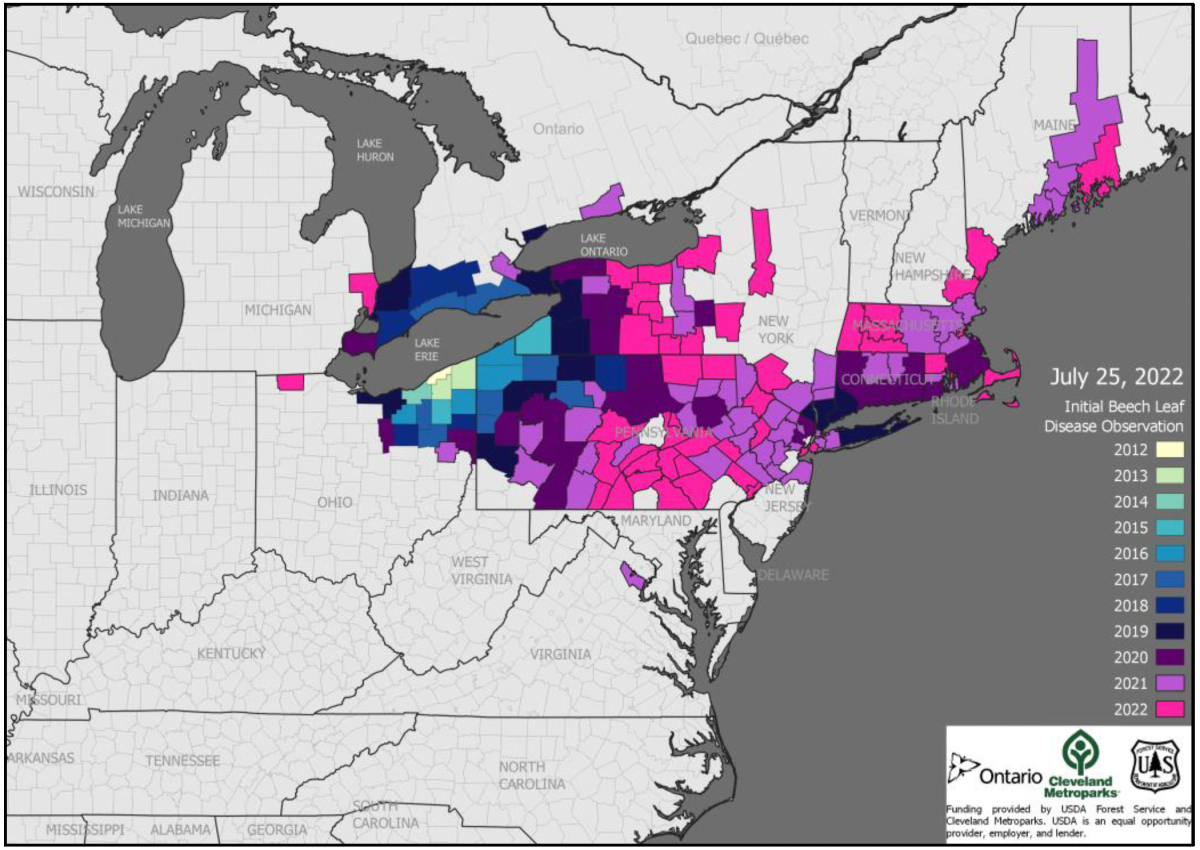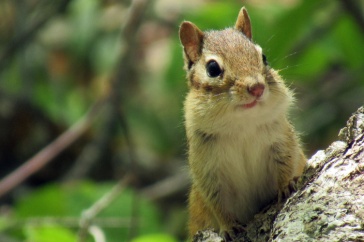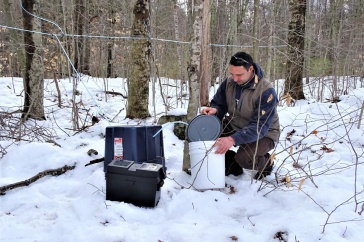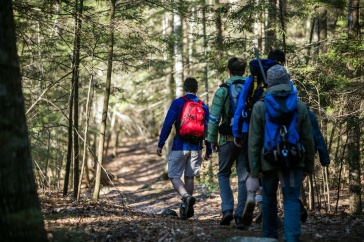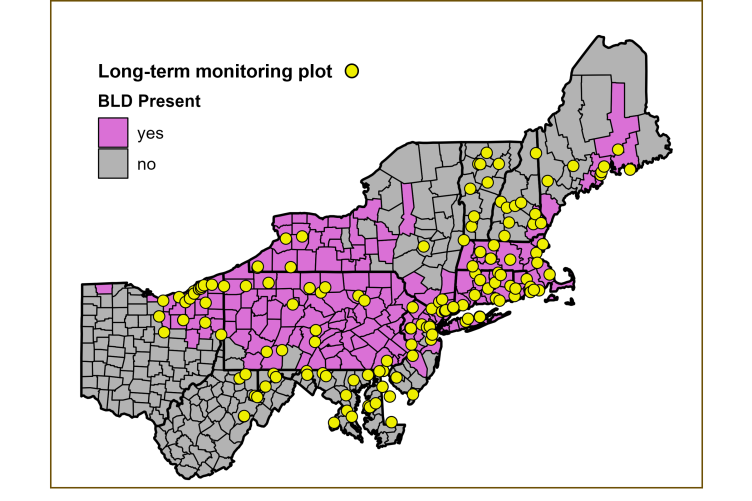
Long-term monitoring plots for beech leaf disease, along with counties in which the disease has been identified (in pink). Map courtesy of Cameron McIntire, U.S. Forest Service.
BLD Impacts:
Beech leaf disease (BLD) is a new and emerging forest threat, first observed in the United States in 2012 in Ohio. Since then, the disease has spread east and to the north and south and now can be found across New England. BLD symptoms have been observed in native American beech trees—as well as European and Oriental beech—of all different sizes and ages, with symptoms appearing as dark banded areas between veins of infected leaves, while higher severity infections produce stunted leaves that are crinkled and leathery in texture. The nematodes overwinter in dormant buds and can cause spring leaves to abort or, where leaves are produced, causes malformation, reduced photosynthetic capacity, and early senescence in mature leaves.
Some chemical treatment methods for BLD are showing promise, but these are generally not feasible for use at a forest scale. In untreated, heavily infested stands can exhibit sapling mortality within 2-5 years of infection. Adult trees are likewise impacted, though decline is typically more gradual before succumbing to the disease.
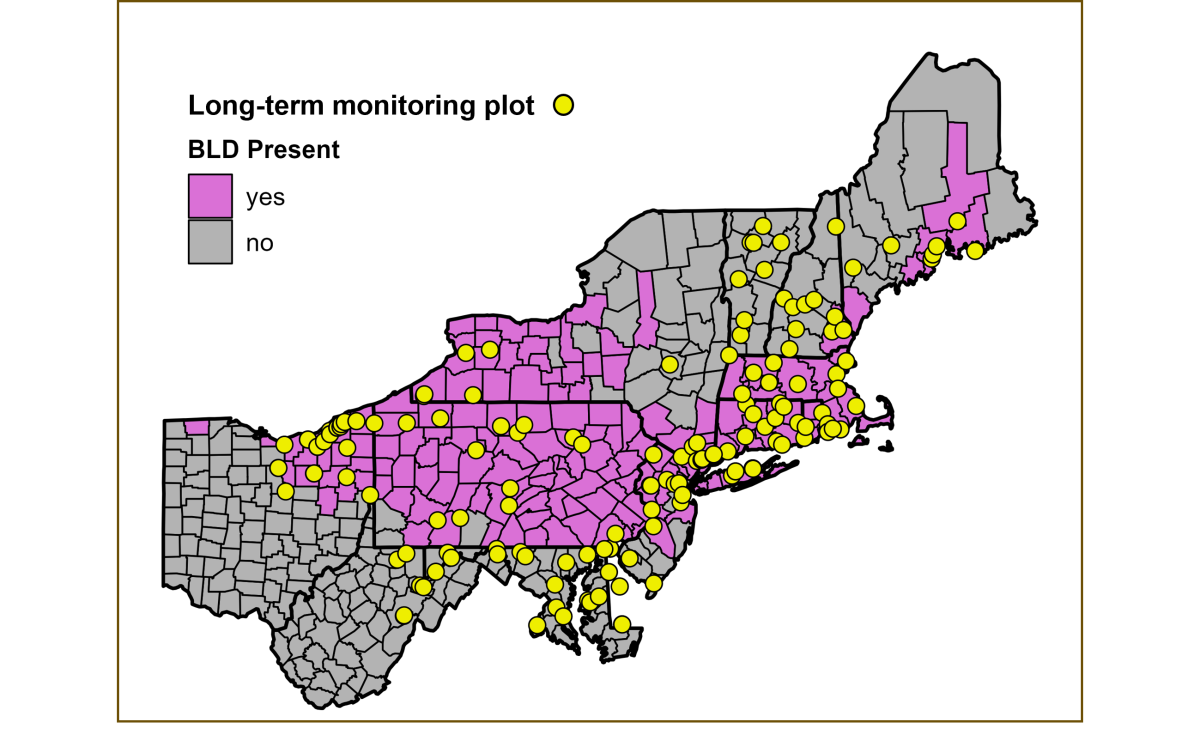
A crisp New England morning hike could lead you along a stream, up on a mountain, or near a field of grazing dairy cows. But regardless of where, you’re almost always going to walk by an American beech (Fagus grandifolia) tree, which are native to the Northeast and contribute to the economic resilience of New Hampshire’s communities as well as being critical to sustaining the diverse wildlife that live in the state’s and region’s deciduous forests. These iconic trees, however, have continued to be ravaged by beech bark disease (BBD)—a widespread tree cankering disease caused by invasive felted beech scale insects and associated fungal pathogens. Now, another disease is threatening to impact New England’s forests, and New Hampshire Agricultural Experiment Station scientist Jeff Garnas is quickly preparing to study this novel challenge.
Symptoms of beech leaf disease (BLD) are strongly associated with parasitic nematodes, or roundworms, that attack the tree’s buds and damage the leaves of American beech, greatly limiting trees’ ability to photosynthesize. First observed in Ohio more than a decade ago, BLD has been spreading to the east and to the north and south, overlapping with forests long affected by BBD. Many questions remain regarding the biology and impacts of BLD, including the anticipated consequences for the northeastern forests and the New England landscape from BLD alone, or from the combined effect of BLD and BBD.
Garnas, an associate professor of forest ecosystem health in the natural resources and the environment department at UNH, is initiating a comprehensive study of patterns of both BLD- and BBD-induced mortality trees in eastern forests, thanks in part to a recent grant from the U.S. Forest Service’s Forest Health Monitoring program. Garnas, who has studied BBD for over a decade, will be joined in the research by Cameron McIntire ’18PhD, a plant pathologist with the U.S. Forest Service and an alum of the UNH College of Life Sciences and Agriculture, as well as by researchers from the U.S. Forest Service, UNH Extension, Cleveland Metroparks, and other state forestry agencies.
“We’re concerned about the interaction between BLD and BBD as the former continues spreading throughout New England and the latter has been established here for close to a century,” McIntire said. “This work will yield important information about tree growth in response to these diseases and may allow us to identify stands at the greatest risk of decline and mortality.”


Left: An American beech branch with curled and brown leaves—signs of beech leaf disease. Right: Several beech tree saplings showing early signs of beech leaf disease.
Along with Forest Service plant pathologists Danielle Martin and Isabel Munck and other collaborators, Garnas and McIntire will collect tree core samples—narrow cross-sections of wood that are extracted from the trunks of trees where past patterns of tree growth are preserved—from BLD monitoring sites across nine states in the Northeast: Ohio, Pennsylvania, New York, New Jersey and all of New England except Vermont. By measuring tree rings from BLD and BBD infected and uninfected trees from Maine to Ohio, they will be able to reconstruct precisely how annual beech growth has responded to both diseases and to their combined effect. They also plan to investigate climate records for the outbreak period, assessing any role that climatic conditions may have played in advancing the disease and contributing to growth declines and mortality.
Map showing year-over-year BLD expansion in the northeastern U.S. Map courtesy of U.S. Forest Service and Cleveland Metroparks.
Beech is a critical component of Eastern hardwood forests. It is among the region’s most shade-tolerant trees, and it also provides a high-quality nut crop on which native wildlife depend. So, determining the possible impacts of BLD—and maybe solutions to—is of great relevance to the region, said McIntire.
The resulting data will contribute to a growing body of research into BLD, its effects on the forest, and possible management approaches to mitigate its impacts. Additionally, the research will support beech health and BLD management workshops and resources developed and led by UNH Extension.
“As a new disease in our forests, the long-term impacts of BLD are currently difficult to predict with any certainty,” said Garnas. “As is the case with many novel forest threats, it is spreading quickly and causing significant damage. There is definitely cause for concern.”
“Ultimately, this work will provide forest managers and forest health specialists much-needed tools for understanding, assessing and predicting the long-term impacts of [beech leaf disease].”
Added Garnas, “Ultimately, this work will provide forest managers and forest health specialists much-needed tools for understanding, assessing and predicting the long-term impacts of BLD, including its interaction with beech bark disease—already widespread within the region.”
This research is supported by funding from the U.S. Forest Service. Grant proposal title: The Prognosis for Beech Leaf Disease: Quantifying growth declines and forecasting mortality across the eastern United States, 2022.
To learn more about BLD identification, symptoms, management and reporting, visit the NHBugs website on beech leaf disease. This website is a cooperative effort of UNH Extension; the U.S. Forest Service; the New Hampshire Department of Agriculture, Markets & Foods; the NH Division of Forests and Lands; and the USDA's Animal and Plant Health Inspection Service (APHIS).
-
Written By:
Nicholas Gosling '06 | COLSA/NH Agricultural Experiment Station | nicholas.gosling@unh.edu

















































